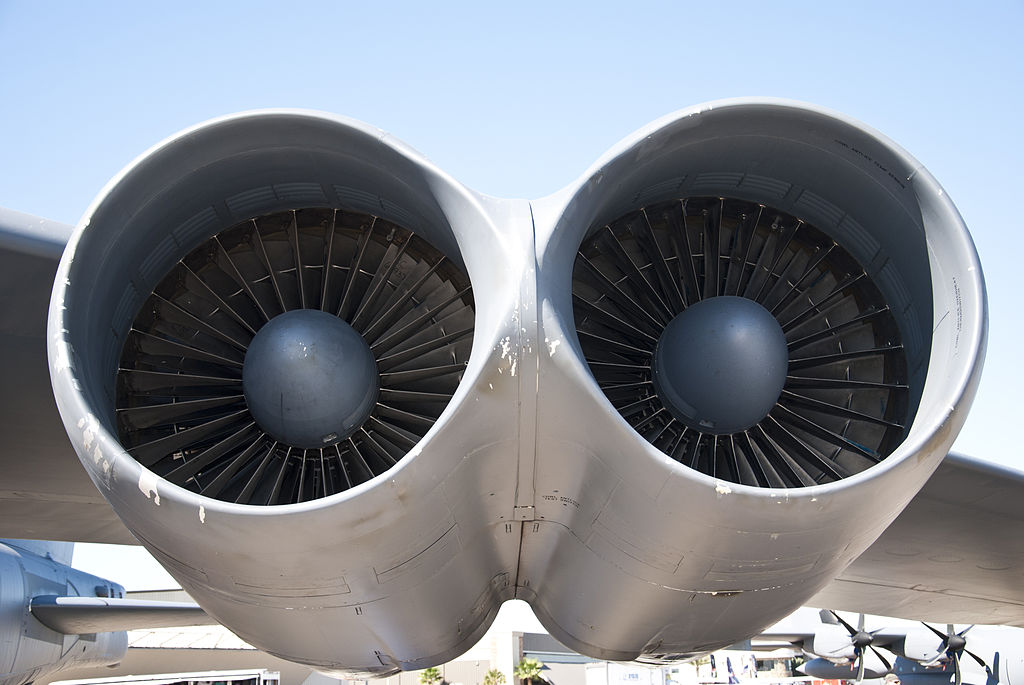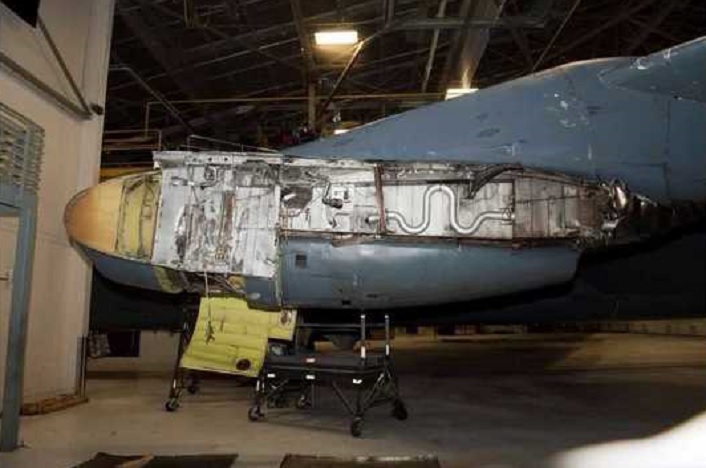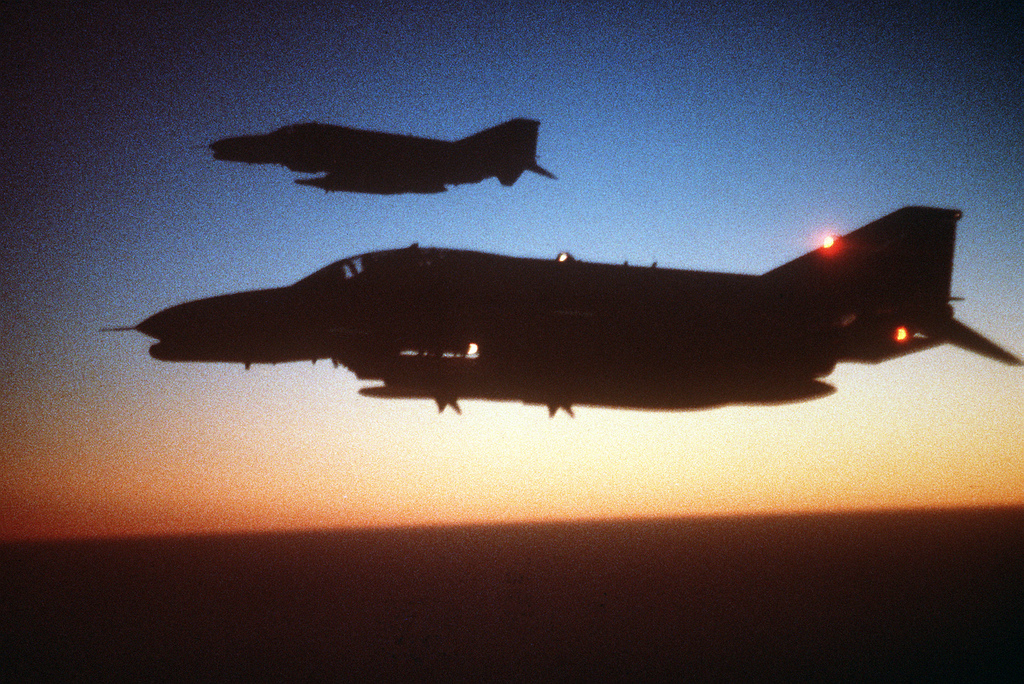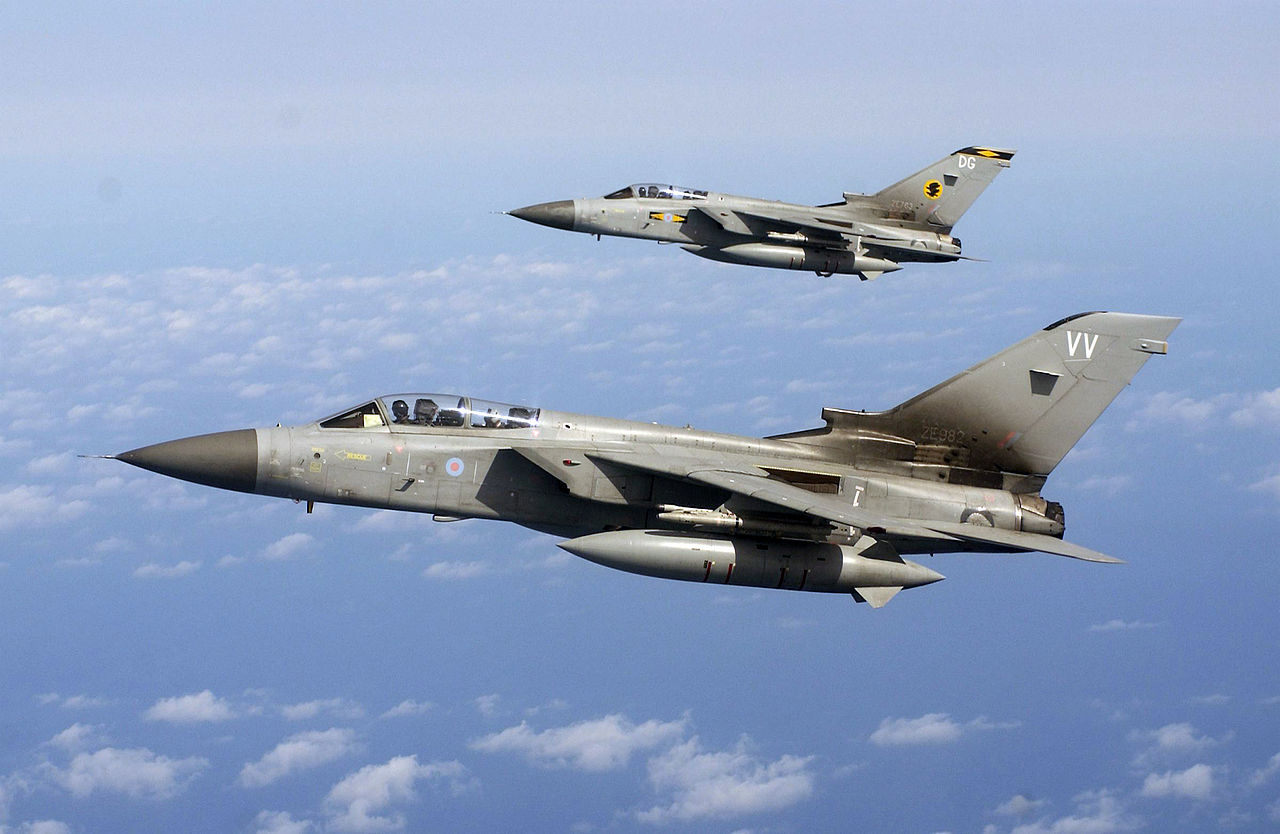During their attack run, Sqn Ldr Pete Batson and Wg Cdr Mike Heath caught an Iraqi Air Force Mirage F1EQ landing on the runway instead of a “MiG” in their JP233 weapons footprint.
The Royal Air Force (RAF) responded to the Iraqi invasion of Kuwait in 1990, which set off the Gulf Crisis, by dispatching Tornado F3 fighters to Saudi Arabia to assist in protecting the nation against any aggression. Following these, Tornado GR1 strike/attack aircraft were sent to Bahrain. In the end, a detachment of Tornado GR1A reconnaissance aircraft was established, along with three wings of Tornado GR1s in Bahrain, Tabuk, and Dhahran. Using the JP233 runway denial weapon, the Tornado GR1 wings carried out low-level night attacks against Iraqi Main Operating Bases at the onset of hostilities in January 1991.
As described by Michael Napier in his book RAF Tornado Units of Gulf War I, the Tabuk Wing was tasked with mounting Mission 2621/G against the runway surfaces at Al Asad air base in central Iraq on the evening of January 17, 1991. The eight Tornado GR 1s of Dundee formation, all equipped with JP233 runway denial weapons, were led by Sqn Ldr P K Batson and Wg Cdr M C Heath and were aimed at the airfield.
‘With the minimum of radio chatter, aircraft taxied at their designated time to arrive at the runway hold in the correct order for takeoff at 2200 hrs Saudi time’, recounted Batson. ‘Departure from Tabuk involved a climb to medium level en route to meet the Victor tanker in the nominated AAR area. The refueling was all carried out in silence using light signals. It was a bit turbulent, and with the weight of the two JP233s, it required much throttle pumping to get the aircraft to close on and stay in the basket. I could not recommend this technique as an AAR instructor, but it worked.
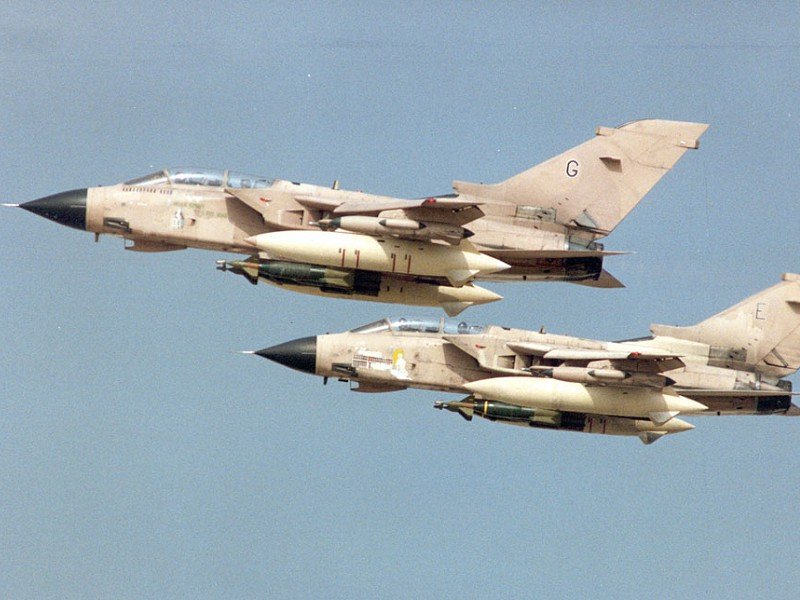
‘There was no moon, so it was all a bit dark out and about, but there were some aircraft lights well below us. After refueling, checks were completed in preparation for descending to low level and going “sausage side” – this involved switching all the external lights off and switching our EW equipment on. Once at 200 ft using the auto TF, the aircraft was kept on course purely by the navigator keeping the “kit” in order. My job at this time was to change speed as ordered and monitor the TFR to ensure it was doing what it was supposed to.
‘As we crossed the border, looking out the window, all I saw was a lot of nothing, just varying amount of blackness. We overflew what appeared to be flaming aircraft wreckage at some point and saw something quite odd at several points along the route. As we crossed major roads, a spotlight parked on the road would illuminate, not aimed at us, just into the sky. It soon became apparent that it was a very basic but clever system of early warning. No doubt a conscript had been ordered to switch on the light if he heard an aircraft. The lights were quite well spaced along the road, and it gave a beam of light to the left of us and a beam of light to the right of us, forming a surreal corridor of our progression into Iraq.
‘The closer we got to the target the faster we went, progressing in stages from 450 knots up to about 500 knots – the aircraft needed small bursts of reheat to overcome the drag effect of the JP233 at the latter speed. As the leader, we were at the front of the package attacking Al Asad. I thought that this could work in our favor, as we would be well over the airfield and out the other side before anyone knew we were there. The target area could be seen from about eight miles out – one minute’s flying time – and all I saw was the lights of the airfield and the lights of an aircraft in the visual circuit. At this point, I disengaged the autopilot to prevent the TFR giving pull up commands and was flying manually.

‘Mike and I rapidly discussed the threat the enemy aircraft could be to the rest of Dundee formation, so I attempted to lock my AAM onto it, but no reassuring growl came back. One of the disadvantages of using Air to Air mode when the weapon aiming system is in attack mode is that it cancels the latter, and that is exactly what happened.
‘It was at about this time—30 seconds out, and with no weapon steering in the HUD—that our presence was known to the enemy, and the sky was filled with AAA tracer and bright white star shells exploding just above us. I manually selected pilot weapon aiming and moved my aircraft to ensure the munitions would go over the still-lit runway. Out of the corner of my eye, I spotted the aircraft that had been in the circuit rolling down the runway, so I adjusted the track and hit him as well. As the munitions deployed, the most satisfying sound I heard was the two weapon containers departing the aircraft with a “clunk, clunk”.
‘We were now in the middle of the inferno, where it was relatively clear of AAA, but we had to get out the other side. Off target, we visually sighted a missile launch so I maneuvered the aircraft hard to the left to get on to our escape heading ASAP. It was at this point, flying manually at about 150 ft in a 60-degree turn to the left, that Mike shouted “roll left, turn left.” I didn’t really understand why he wanted me to increase the angle of bank, so I checked the artificial horizon and kept what I had, only to hear again “roll left, roll left.” As I rolled out onto the escape heading and put the autopilot back in, all became clear. As I maneuvered off target Mike had become disorientated with the stream of tracer around the cockpit and thought we were in a roll to the right, hence his urgent need for me to roll left. We left the target area at a now achievable speed of 520 knots, racing for the border.

‘The gaggle set track for home, picking up their respective route and times to make the allocated exit gate to leave Iraqi airspace. At the border, the quietly ecstatic formation climbed to medium level, and then we checked in on the radio – all present and correct with no losses, job well done!’
After its first JP233 operation against Al Asad on January 17, 1990, the aircraft piloted by Batson and Heath (Tornado GR1 ZA447/EA, originally from No 15 Sqn at Laarbruch) was dubbed MiG Eater. But when it landed on the runway during its attack run, Sqn Ldr Pete Batson and Wg Cdr Mike Heath caught an Iraqi Air Force (IrAF) Mirage F1EQ—not a “MiG”—in their JP233 weapons footprint.
RAF Tornado Units of Gulf War I is published by Osprey Publishing and is available to order here.
Artwork by artist Gareth Hector via Osprey Publishing
Photo by Top Image unknown via Pinterest, Crown Copyright and Alan Wilson from Stilton, Peterborough, Cambs, UK via Wikipedia



